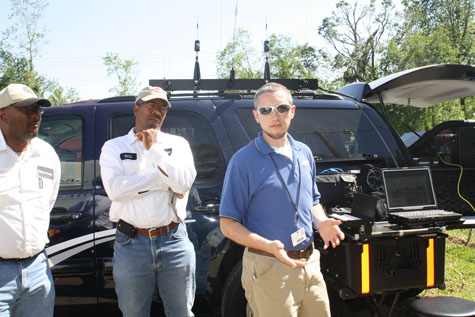The digital divide can hamper recovery during natural disasters
Areas in America that have limited or no broadband access to the Internet may find themselves in extremely critical situations during a natural disaster.
Such limitations can be costly, especially during a state of emergency. For example, in the aftermath of the April 24 violent tornado that struck Central Mississippi, killing 10 people, the Federal Emergency Management Agency (FEMA) could not set up a disaster assistance office in Ebenezer, Miss. because of the Internet situation there.
“We’d hoped to have an office here, but the reason we haven’t yet is because the Internet service has to be improved in Ebenezer,” said Gov. Haley Barbour during a press conference there several days after the storm. “That’s why the office [for the people here] is in Lexington rather than Ebenezer.”
Data released earlier this year by a Federal Communication Commission study indicated, “one-third of Americans are not connected to high-speed broadband Internet services. The primary reasons these 93 million Americans cite for not having broadband service include affordability and a lack of digital skills needed to take advantage of the technology.”
While these are key reasons, many will argue that proper infrastructure for access throughout America needs to be factored into the equation as well. Without high-speed broadband, numerous communities are forced to accept “snail-speed” dial-up or “expensive” satellite Internet services.
FEMA encouraged tornado victims to register online in applying for disaster assistance, but for the most part, many did not have access. Therefore, having access to the toll-free FEMA number to call and a disaster assistance office nearby to help were important.
FEMA Field Representative Gene Kauffman told The Mississippi Link that since the phone lines were down in the Holmes County-affected area, they (FEMA) allowed storm victims to use phone service via satellite in their mobile disaster recovery unit based at the Ebenezer Fire Station, dubbed command station. “Some of our community relations people were kind enough to let residents use their FEMA cell phones to register for help,” he said. “Unfortunately, in a lot of instances, the cell service was very ‘touchy’ in the area. It was a little better over in Choctaw County,” Kauffman said.
To help close the gap on such digital disparity in America, the Obama administration earmarked funds in the 2009 Stimulus package to improve Internet infrastructure, make broadband more available and provide training for Americans who lack digital literacy skills. The Federal Communication Commission has submitted its Broadband Plan to the administration.
The campaign for countrywide access ignited the formation of Broadband for America, a more than 200-member coalition of individuals and communication entities leading the charge in the President’s goal for each American home to have broadband Internet.
It has as its mission “to make broadband access to the Internet available to every household in the nation; to provide data transfer speeds to make that broadband experience valuable to users; and to provide the bandwidth necessary for content providers to continue to make the Internet a cultural, societal, and economic engine for growth.”
Recently, the national broadband efforts received a boost. The National Telecommunications and Information Administration (NTIA) announced over $114 million in grants to help bridge the technological divide. The grants will fund projects that lay the groundwork to bring enhanced high-speed Internet access to thousands of households and businesses and link hundreds of schools, hospitals, libraries, and public safety offices to the information superhighway.
For more information about the Broadband for America, log on to www.broadbandforamerica.com. For fact sheets on the NTIA grant, log on to http://www.ntia.doc.gov/broadbandUSA)


Be the first to comment